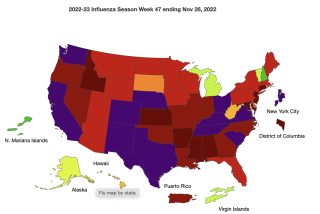In Practice: Doctors, don’t be afraid of the friendly touch
- Share via
Recently, I made a house call to a 92-year-old man to deliver some important news: He needed a blood transfusion to treat an unexpected anemia. Usually, I sit on his couch, about 6 feet away from his recliner. This time, I made a point of kneeling in front of him.
One of the nurses I work with arrived a minute later. She kissed the old man on the top of his head and rubbed his back as they listened to me explain how the transfusion would work. My patient’s shoulders relaxed and his stress melted away. I’m sure this had little to do with me kneeling and a lot to do with the nurse’s touch.
Doctors and nurses know that touch can improve blood pressure and decrease stress. Touch lowers levels of cortisol, a stress hormone, and may increase oxytocin, a hormone that plays a role in trust and emotional bonding.
The obvious time for doctors to touch their patients and create a sense of trust is during the physical examination. But the old-fashioned physical exam — in which the doctor methodically studies the body, looking, listening, pressing and tapping — has become a relic. These days, few doctors have time to perform thorough exams, and a good number barely touch their patients at all. Or, worse, they snap on a pair of gloves. Gloving up for a pelvic or rectal exam is obviously de rigueur, but wearing them during the rest of the physical exam sends a clear message: I don’t want to touch you.
So it’s particularly unusual for doctors to be comfortable touching their patients outside of the physical exam. And when we do it, it feels strange. Even shaking a patient’s hand doesn’t come naturally to all of us, much less a gentle pat on the shoulder. After all, our traditional role as physicians is more about diagnosing and treating than comforting.
When I was in my residency training, I taught a medical student named Laurie who had been a nurse before she started medical school. One day, we were called to see a man whose heart jerked in a life-threatening rhythm. Six or seven of us frantically inserted IV lines and catheters, panicked over his electrocardiogram readings and hollered blood test results back and forth.
For a minute, I couldn’t find Laurie amid the chaos. Then I saw her. She sat by the patient’s head, stroking his forehead, whispering. Thanks to her nursing background, she knew how to use her hands to calm him.
I’m not saying that doctors — or nurses — should be touching their patients 24/7. Nor am I suggesting that doctors imitate the way some nurses smooth their patients’ hair or massage their shoulders. In many settings, touch just isn’t appropriate. It may make a patient uncomfortable, especially when the doctor is male and the patient female.
But there are times when it can make a huge difference. Doctors can learn plenty about the art of friendly touch from watching nurses, so many of whom have an innate sense about vulnerable moments and the right instant for the laying on of hands.
When I next saw my 92-year-old patient, he was in bed, lacking the energy to haul himself to his recliner. On my way out, I squeezed his shoulder and bent down to give him a noisy kiss on the cheek.
We laughed. And I couldn’t resist reaching for his hand before I said goodbye.
This is the lovely secret of touch: It soothes both patient and doctor.
Reisman is a general internist in Connecticut. She can be reached at anna.reisman@yale.edu.





